Once again, Ron and I chose two different excursions. Ron’s strong interest in history led him to visit the Bayeux Tapestry while Paul chose to revisit a place he saw when he was a foreign exchange student to France in his high school days, Mont St. Michel. This island rises out of a bay at the mouth of the Couesnon River and when the tide comes in, the island is completely surrounded by water. In the old days you had to enter and leave the city only at low tide, but now a causeway has been built that overcomes that issue. The island is dominated by a huge abbey dedicated to Saint Michael, the archangel.
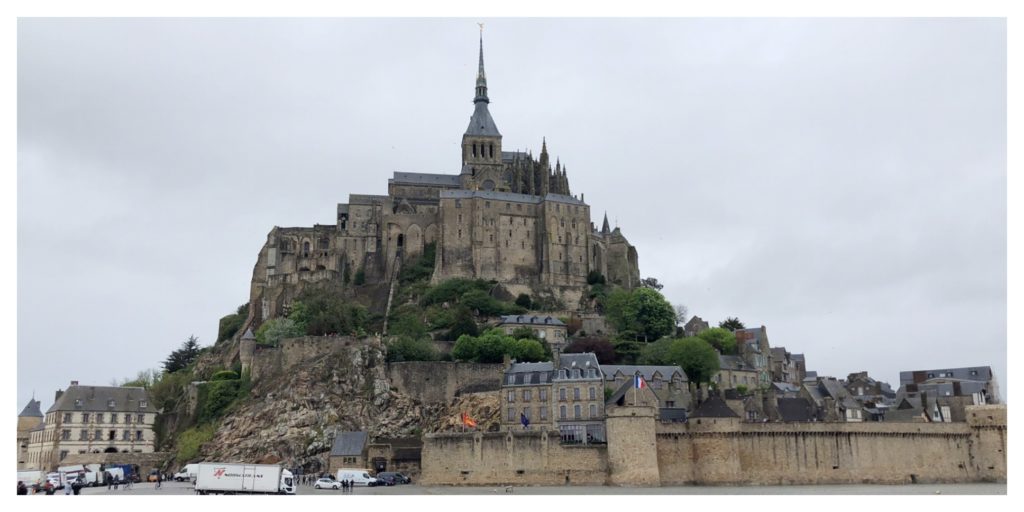
Legend has it that in 708 the archangel Michael appeared in a vision to Aubert of Avranches, a bishop in a city near the island and told the bishop to build a chapel on the island where people could honor him. Aubert thought he had experienced a dream and did nothing. The next night the vision was repeated and again Aubert did nothing. The archangel appeared a third time, but this time was angry and pushed his finger into the bishop’s head leaving a hole. With this evidence that the vision was not a dream he immediately started building a chapel on the island.
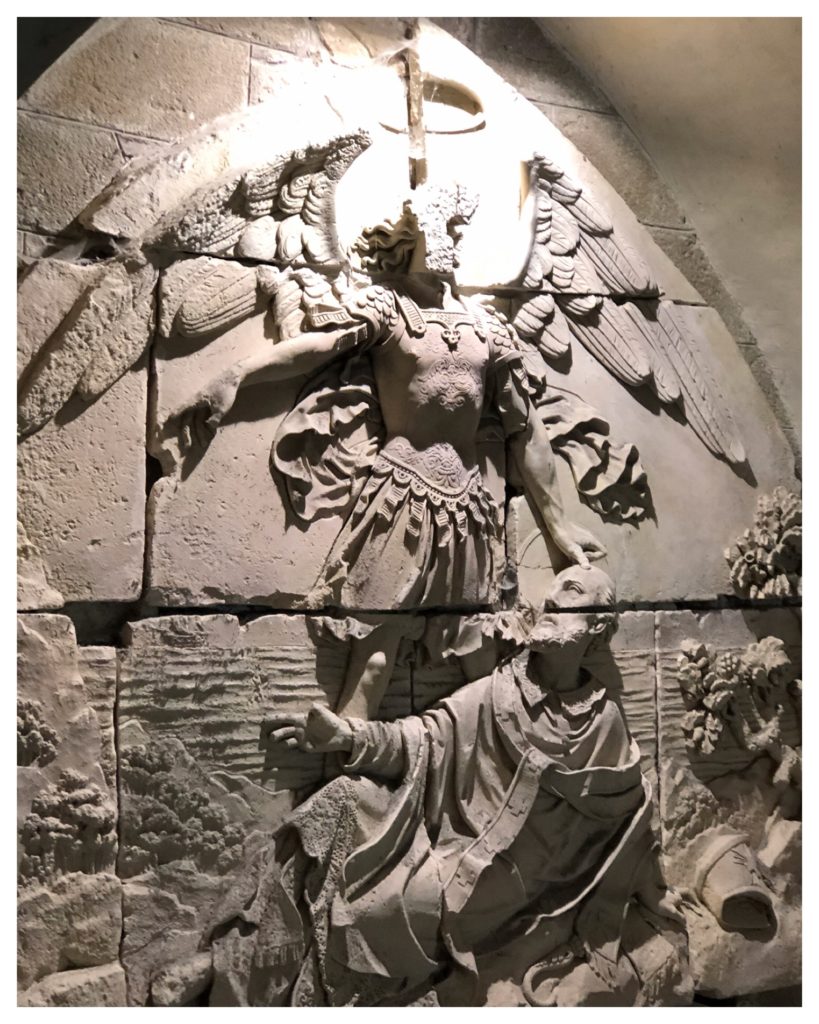
Pilgrims come to pray to and honor St. Michael because he is both the conqueror of the devil as well the final judge who will use his scales to weigh your soul when you try to enter heaven. If your soul is heavy with sin, Michael doesn’t let you in. The number of pilgrims visiting the island increased and an order of monks built an abbey that eventually developed into the building we see today. The rounded Romanesque arches and the later soaring Gothic architecture give the chapel its impressive appearance.

Until 1863 the island was turned into a prison and was only in 1866 that the abbey was inhabited by Benedictine monks and the abbey restoration began. The refectory (dining room) and the cloister have been recently restored. The 60 monks who lived in the abbey did not speak to each other while eating. The position of the tables along the walls helped. The cloister was used for meditation and prayer.
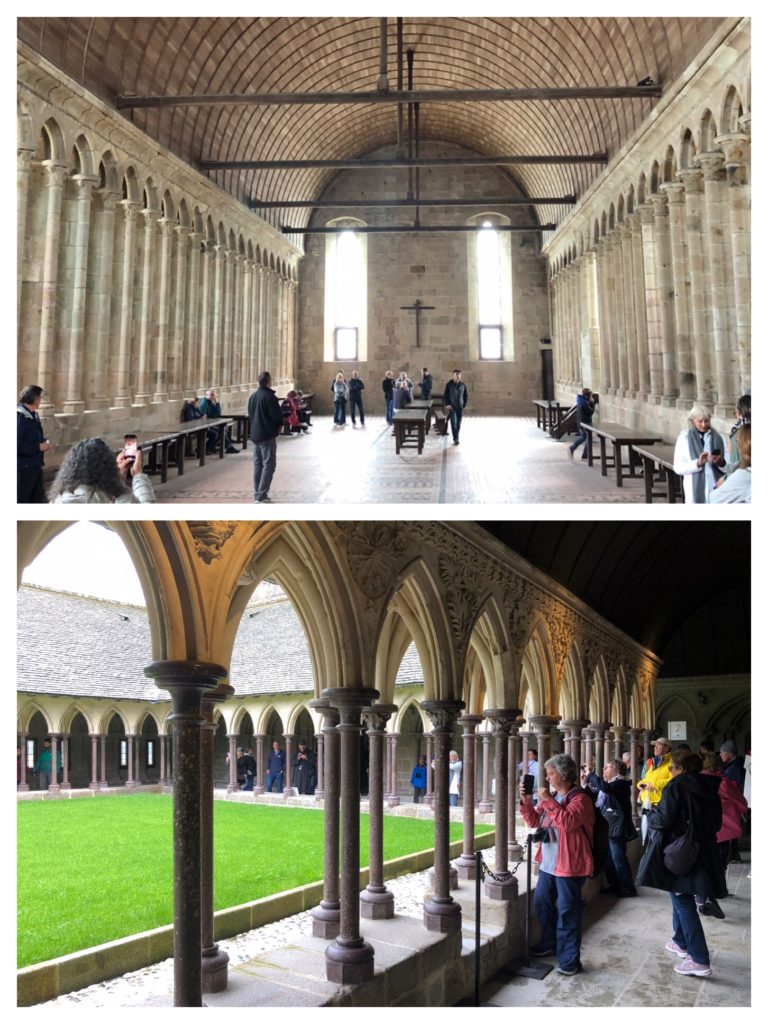
This large hall with its two huge fireplaces was reserved for important visitors and would have been the most comfortable room in the abbey, especially when the walls were covered with tapestries and the floor covered with rugs.

Four crypts were located at the cardinal points of the compass and helped support the weight of the huge chapel. Many smaller chapels underground also support the weight. One chapel has windows with a shell motif indicative of pilgrims.
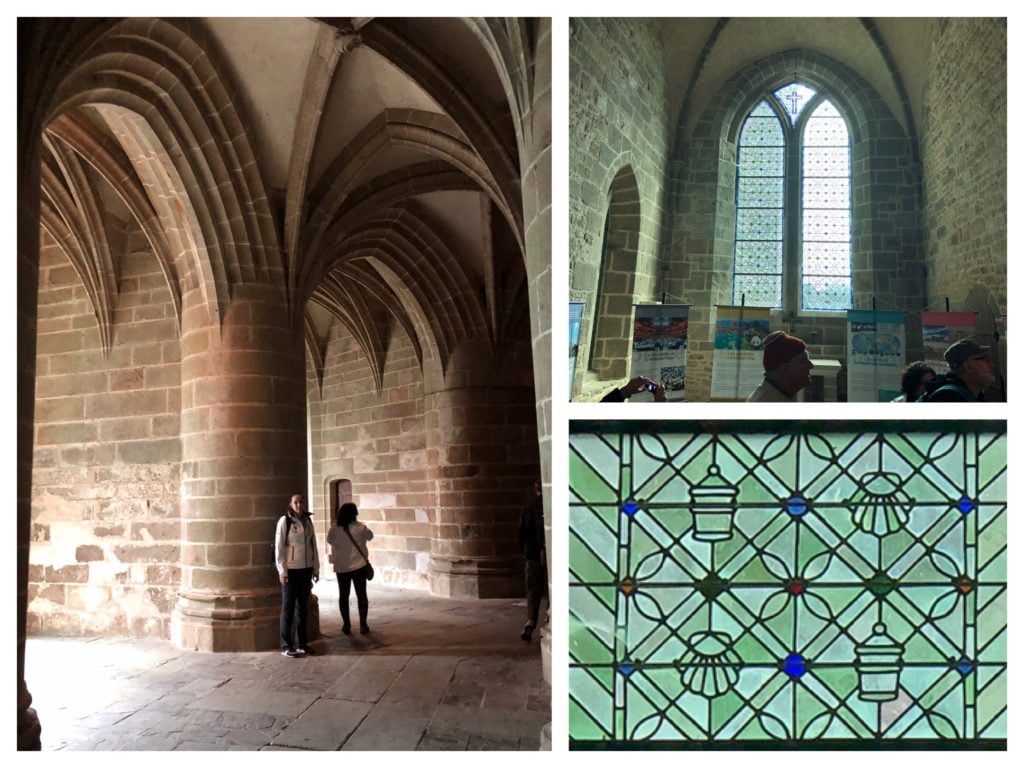
One of the largest and best lighted rooms is the huge hall where the monks worked copying manuscripts such as the Bible and philosophical or historical works.

When you first enter the gate to the island you are on the Grand Rue (big street) which is the main street filled with shops, restaurants, and historical museums. 300 steps take you up to the abbey. The trek was tough, but we rewarded ourselves with pastries and “frites” on the trip back down. I had heard of the amazing omelettes made at La Mère Poulard’s restaurant located at the beginning of the narrow path taking you up to the abbey, but we did not get to try them on this visit.

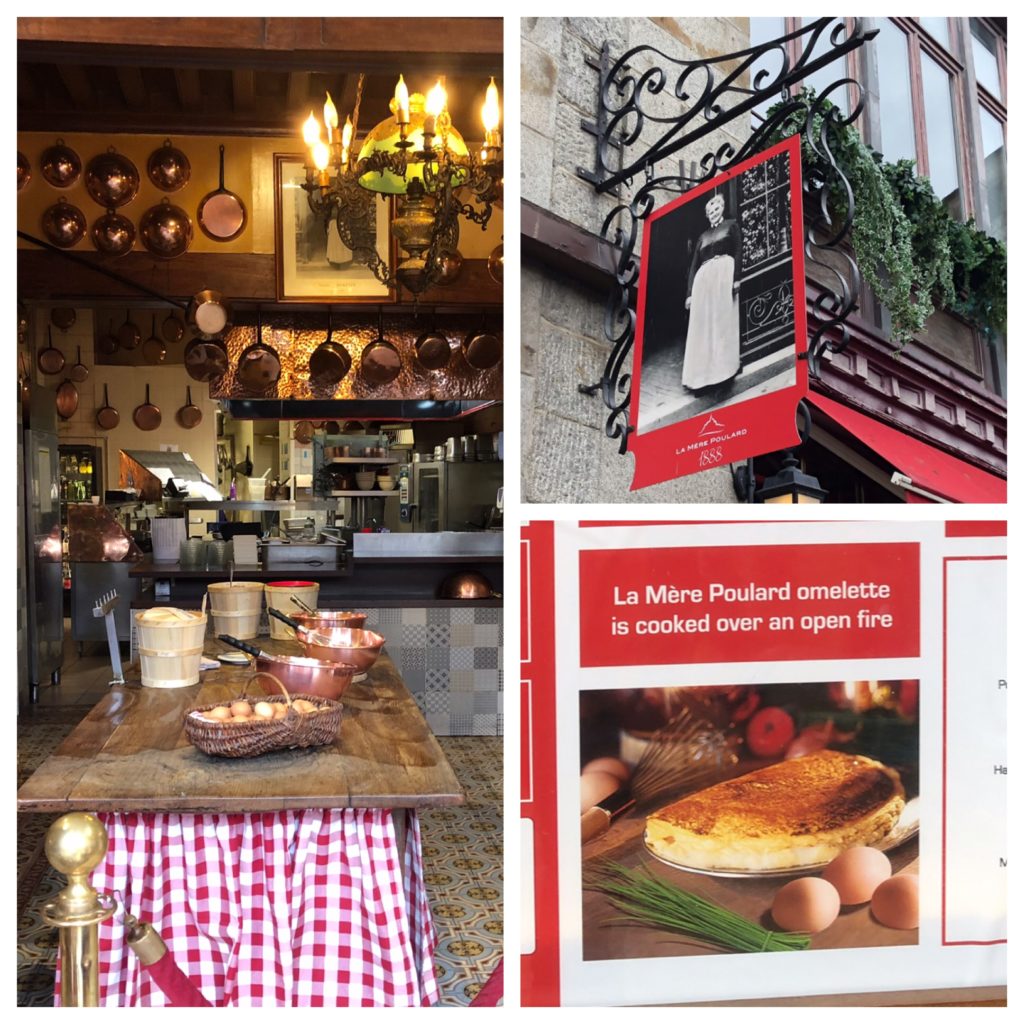
Two other interesting points were the fact that the stones of the abbey are marked with the mason who made them. Our guide said that the marks were important to determine how much each mason was paid. Also, high up in the abbey, there is a huge wooden wheel in which six men would walk to pull a sled up a steep ramp to move supplies from the lower level up to the abbey.
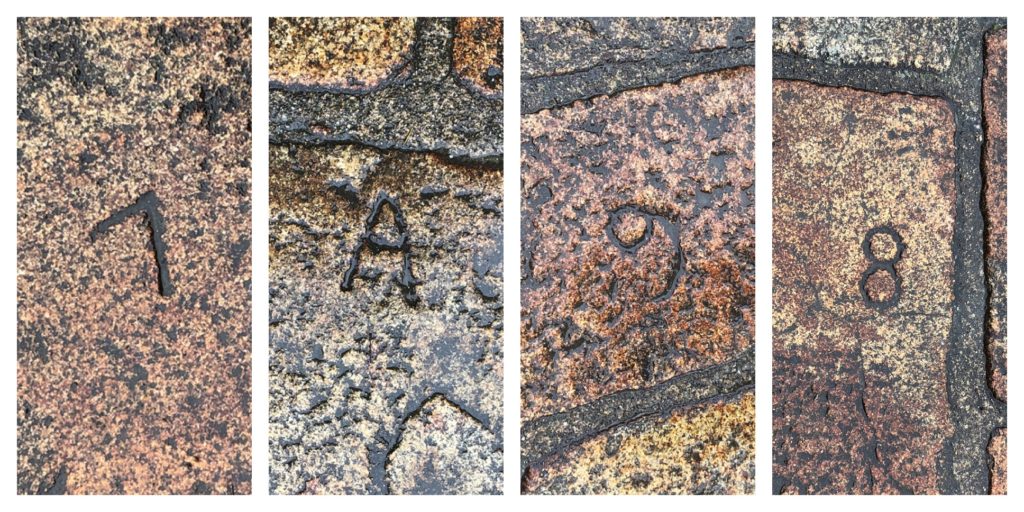
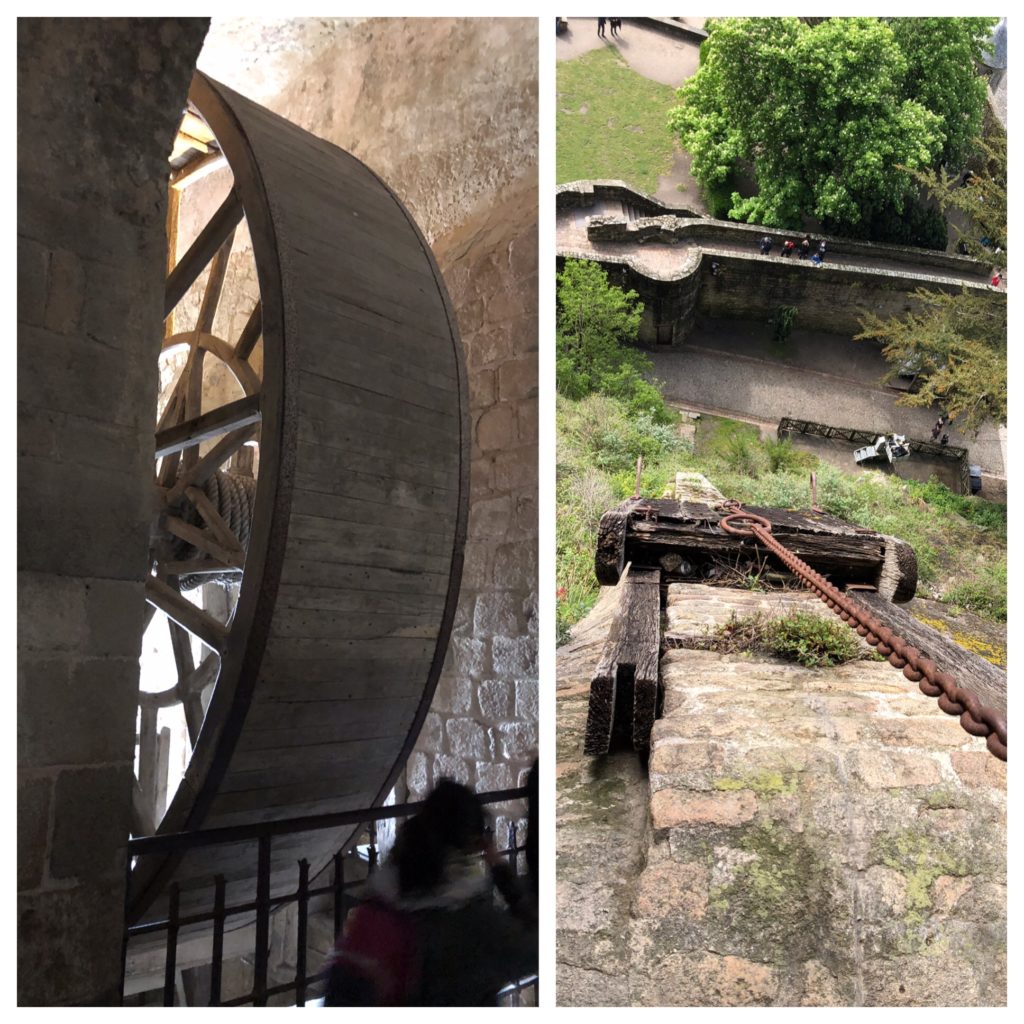
Mont St. Michel is the second most visited site in France after Paris.